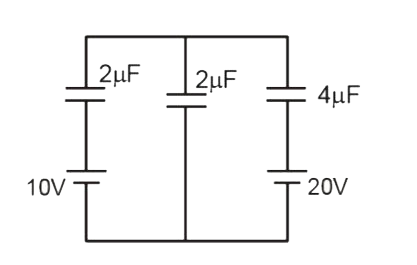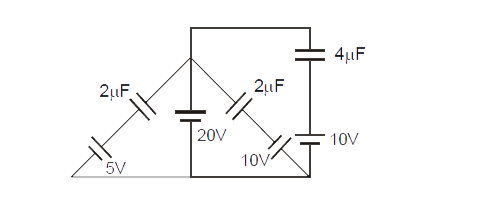If A is connerted with D and B is connected with C find the potential difference a across each capacitor and the final charge in each capacitor.
Video Solution
Text Solution
Let the potential of B and C be zero and the common potential on the capacitors be V, then at A and D, it will be V. From charge conservation,
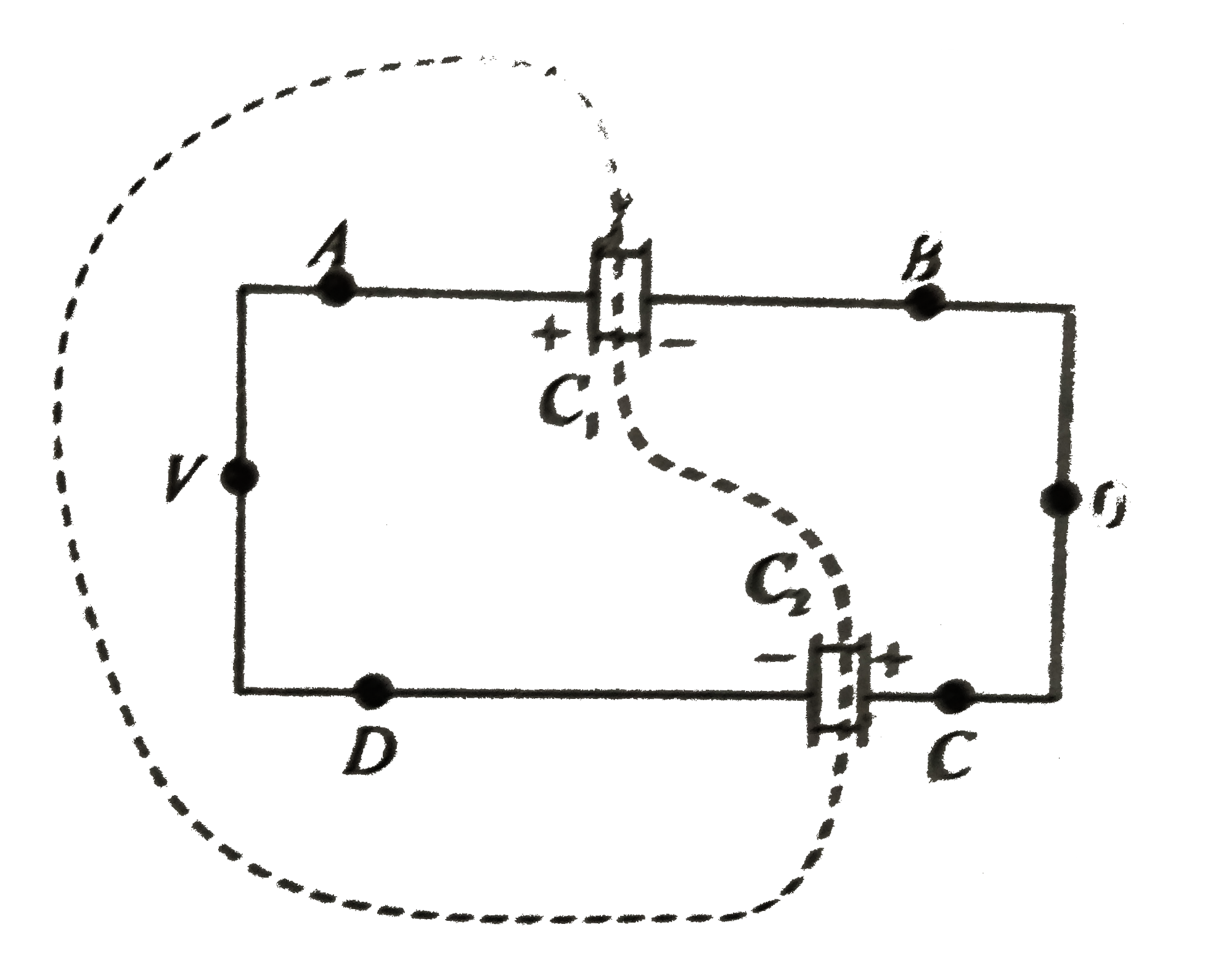 .
.
C1V+C2V=3V+2V
=40−30=10
or V=2V
Final charge in capacitor C1 is
(Q1)final=2×2=4μC
Final charge in capacitor C2 is
(Q2)final=3×2=6μC.
|
Updated on:21/07/2023
Topper's Solved these Questions
- BOOK - CENGAGE PHYSICSCHAPTER - CAPACITOR AND CAPACITANCEEXERCISE - Solved Examples10videos
CAPACITOR AND CAPACITANCE
- BOOK - CENGAGE PHYSICSCHAPTER - CAPACITOR AND CAPACITANCEEXERCISE - Exercise 4.113videos
CAPACITOR AND CAPACITANCE
- BOOK - CENGAGE PHYSICSCHAPTER - ATOMSEXERCISE - QUESTION BANK40videos
ATOMS
- BOOK - CENGAGE PHYSICSCHAPTER - CENGAGE PHYSICS DPPEXERCISE - subjective type51videos
CENGAGE PHYSICS DPP
Similar Questions
Knowledge Check
- Question 1 - Select One
Two capacitors C1 and C2 are charged separately to potentials 20Vand10V, respectively. The terminals of capacitors C1andC2 are marked as (A-B) and (C-D), respectively. A is connected with CandB is connected with D.
i. Find the final potential difference across each capacitors.
ii. Find the final charge in both capacitors
iii. How much heat is produced in the circuit.A128μC 142μC 60uJB28μC 42μC 60uJC28μC 42μC 160uJD2.8μC 4.2μC 60uJ
Find charge in each capacitor:
View SolutionFind charge in each capacitor:
View SolutionFind charge on each capacitor.
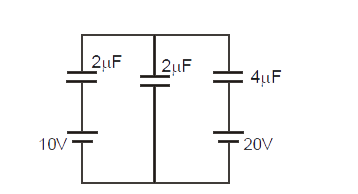 View Solution
View SolutionFind the potential difference and charge on each capacitor.
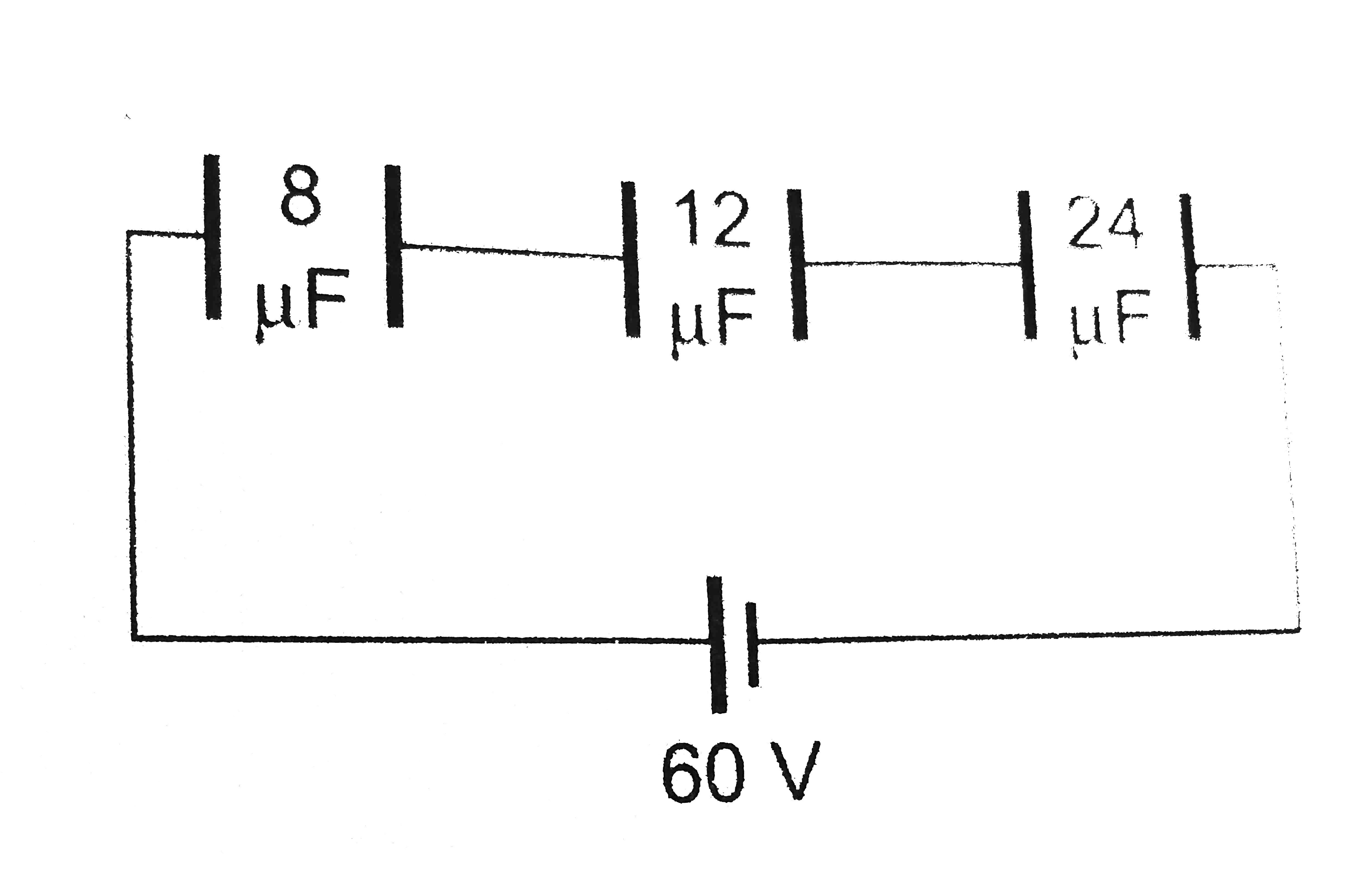 View Solution
View SolutionFind charge on each capacitor and potential difference across each capacitor .
 View Solution
View SolutionTwo capacitors of capacitances 20.0pF and 50.0pF are connected in series with a 6.00V bettery . Find (a )the potential difference across each capacitor and (b) the energy stored in each capacitor .
View SolutionTwo capacitors of capacitances C1=6μFandC2=3μFare connected in series across a cell of emf 18 V. Calculate
(i) the equivalent capacitance,
(ii) the potential difference across each capacitor,
(iii) the charge on each capacitor.View Solution


